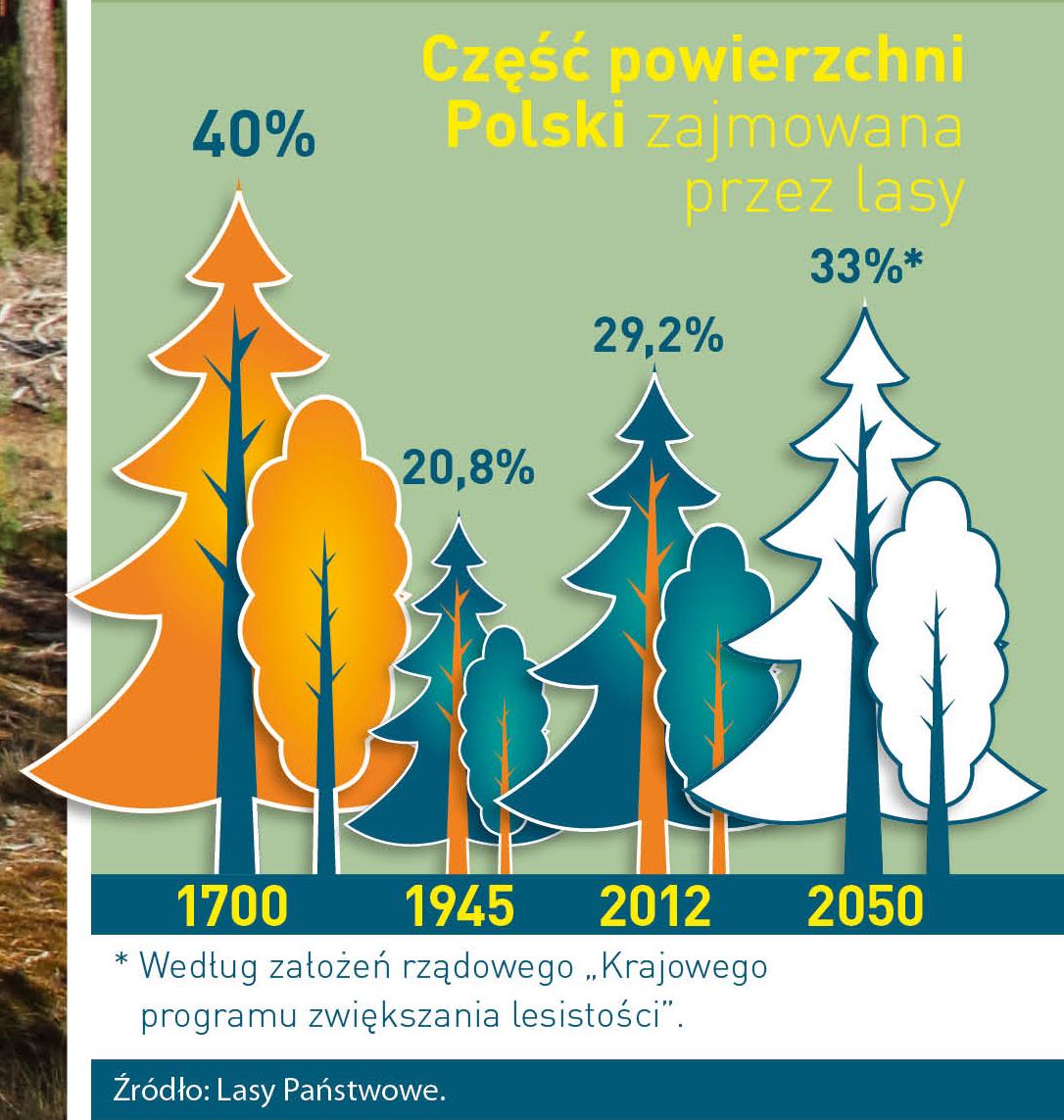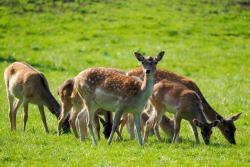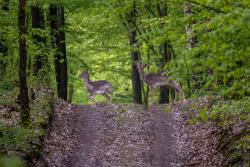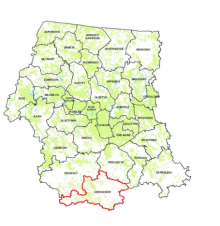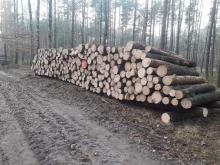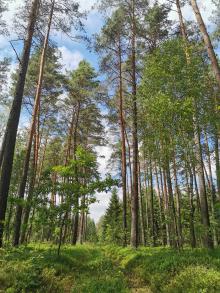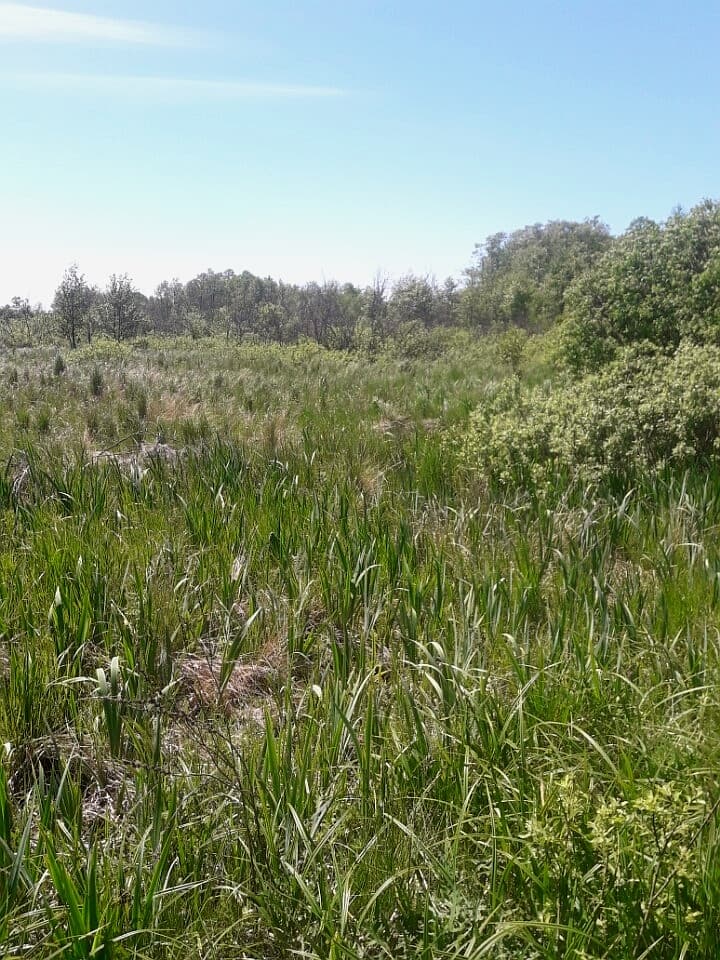 Asset Publisher
Asset Publisher
Polish forests
Poland is in the European lead, while concerning the area of all forests. They cover about 29,2 % of the country territory, and grow within the area of 9,1 million hectares. The overwhelming majority of the forests is state owned, of which almost 7,6 million hectares are managed by the State Forests National Forest Holding..
The number of Polish forest is still growing. The forestation rate of the country has increased from 21 % in 1945 to 29,2 % at the moment. Between 1995 and 2008, the forest area increased by 310 thousand ha. The basis for afforestation works is the "National Programme for Increasing the Forest Cover" (KPZL), assuming an increase of the forestation rate up to 30 % by 2020 and up to 33 % by 2050. Polish forests abound in flora, fauna and fungi. 65 % of the total number of animal species live there.
The forests grow in our country on poor soils, mainly because of the development of the agriculture in previous years. It influences the distribution of the types of the forest sites in Poland. Over 55 % of the forest areas is covered with coniferous forests. In other areas, there are forest sites, mainly the mixed ones. Their small part constitute alder and riparian forests – not more than 3 %.
In the years 1945 – 2011 the area of natural deciduous tree stands within the area of the State Forests National Forest Holding increased from 13 to 28,2 %.
Within the lowlands and uplands the most often occurring tee species is pine. It covers 64,3 % of the forest area of the State Forests National Forest Holding and 57,7 % of private and commune forests. In the mountains the predominant species is European spruce ( in the west) and European spruce with beech (in the east). Domination of pine is the result of carrying on sustainable forest management in the past. Once, the monocultures (crops or cultivations of one species) were the answer to the great demand of industry for wood. Such forests appeared to be quite fragile to climatic factors. They also were often the prey of pests' expansion.
In Polish forests, the share of other tree species, especially deciduous trees have been systematically increasing. The foresters have stepped aside from monocultures – that is why, they try to fit specific species of the forest stand to the natural stand, that would be proper for the given area. Thanks to that, in the years 1945 – 2011, the area of the deciduous tree stands within the lands of the State Forests National Forest Holding increased from 13 to 28,2 %. There occur more and more frequently the following tree species: oaks, ashes, maples, sycamore maples, elms, but also birches, beeches, alders, poplars, hornbeams, aspens, tilias and willows.
Our forests are the most often represented by the forest stands aged 40 to 80 years. The average age of the forest equals 60 years. More and more trees are of big size at the age over 80 years. Since the end of the Second World War, the forests' area has increased up to almost 1,85 million hectares.
Raport o stanie lasów w Polsce 2012
 Asset Publisher
Asset Publisher
Daniel Zwyczajny w Nadleśnictwie Ciechanów
Daniel Zwyczajny w Nadleśnictwie Ciechanów
Daniel zwyczajny (Dama dama) to średniej wielkości ssak z rodziny jeleniowatych, który jest jednym z najbardziej charakterystycznych przedstawicieli fauny polskich lasów. Dorosłe samce, zwane bykami, osiągają długość ciała od 130 do 150 cm, a ich wysokość w kłębie wynosi do 110 cm. Masa ciała byków może dochodzić nawet do 100 kg, podczas gdy łanie (samice) ważą średnio 55 kg. Jedną z cech wyróżniających daniela spośród innych jeleniowatych jest jego poroże – szerokie, łopatowate rogi, które mogą ważyć nawet 7 kg.
Sierść daniela zmienia się zależnie od pory roku – latem zwierzę ma ubarwienie rudobrązowe, z wyraźnymi białymi plamami i ciemną smugą biegnącą wzdłuż kręgosłupa. Zimą jego sierść przyjmuje odcień szaro-popielaty, a plamy zanikają.
Daniele żyją w stadach zwanych chmarami, których strukturą zarządza zazwyczaj doświadczona łania. Chmara składa się z łań z cielętami, młodych osobników obu płci oraz – w okresie godowym – byków. Poza sezonem rui samce prowadzą samotniczy tryb życia lub tworzą małe grupy. Okres godowy, zwany bekowiskiem, przypada na październik i listopad. W tym czasie byki wydają charakterystyczne dźwięki przypominające chrapanie, które mają na celu przyciągnięcie łań i odstraszenie rywali. W przeciwieństwie do rykowiska jeleni, bekowisko danieli jest mniej intensywne, a fizyczne starcia między samcami zdarzają się rzadko, głównie gdy różnice w sile i kondycji są wyraźne.
Po ciąży trwającej około 220–230 dni, łania rodzi zwykle jedno, rzadziej dwa cielęta, które już po tygodniu zaczynają podążać za matką. Młode karmione są mlekiem do kolejnego sezonu rui, a dojrzałość płciową osiągają w wieku 2–3 lat. Byki często przystępują do rozrodu dopiero po pełnej dojrzałości fizycznej, czyli około 5 roku życia.
Daniel jest gatunkiem o dużych zdolnościach adaptacyjnych. W Polsce występuje głównie w borach mieszanych i liściastych, zwłaszcza tam, gdzie lasy graniczą z otwartymi przestrzeniami, takimi jak łąki czy pola uprawne. Unika terenów podmokłych i bagiennych, ponieważ jest przystosowany do suchych, śródziemnomorskich siedlisk.
Jest roślinożercą, którego dieta zmienia się w zależności od pory roku. Latem preferuje trawy oraz liście jeżyny i bluszczu, a jesienią i zimą żywi się korą drzew, pędami roślin iglastych, żołędziami, bukwią i kasztanami.
Daniele mają niewielkie wymagania siedliskowe i są aktywne w ciągu dnia, co czyni je atrakcyjnymi dla miłośników przyrody i obserwatorów dzikich zwierząt. W małych kompleksach leśnych, które nie nadają się do hodowli jelenia szlachetnego, daniel często zajmuje ekologiczną niszę.
Współczesna hodowla danieli w Polsce prowadzona jest w sposób zrównoważony. W ośrodkach leśnych monitoruje się stan zdrowia i liczebność populacji, a także kontroluje się ich żerowanie, by zapobiec nadmiernemu uszkadzaniu roślinności.
W Nadleśnictwie Ciechanów daniela zwyczajnego można spotkać na terenie leśnictw Lekowo oraz Rydzewo, gdzie znajduje się ośrodek hodowli zwierzyny. W tych rejonach daniel zwyczajny jest jednym z gatunków charakterystycznych, a miłośnicy przyrody mają okazję obserwować ten gatunek w lasach naszego regionu.
Zdjęcia autorstwa Miłosz Pogorzelski


 fot. Paweł Fabijański
fot. Paweł Fabijański
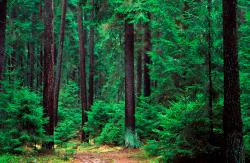 fot. Paweł Fabijański
fot. Paweł Fabijański
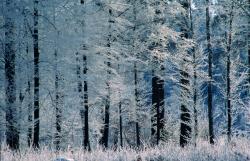 fot. Paweł Fabijański
fot. Paweł Fabijański
